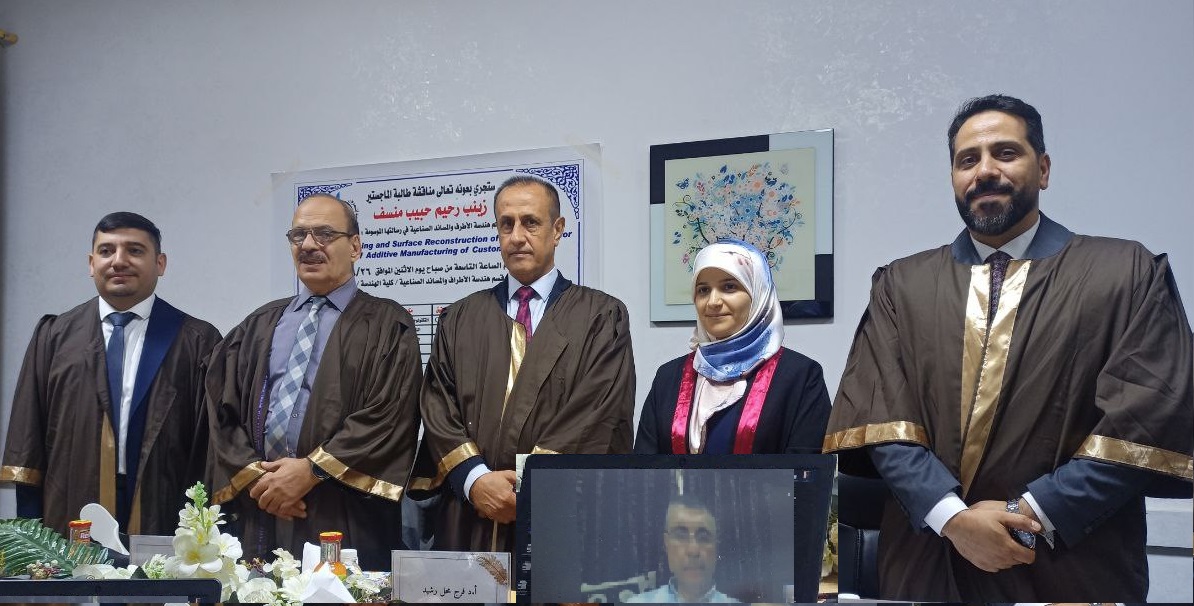Visitors: 5313198 Views
Done By: Department of Prosthetics and Orthotics Engineering
Post Date: 2023-07-02
Last Browse: 2024-04-27

Master's student Zainab
Raheem Habeeb - Prothesis and Orthosis Engineering Department discussed her
thesis tagged: Pre-Processing and Surface Reconstruction of Points
Cloud for Method of Additive Manufacturing of Custom Orthoses Where the
discussion took place on Monday, corresponding to 26/6/2023 in the hall of the Department of Biomedical Engineering.
The discussion committee was chaired by Faraj Mahal Muhammad / University of
Technology / Department of Electromechanical Engineering with the membership of
Prof. Dr. Mahmoud Rashid Ismail and Assistant Professor Dr. Ammar Essam Saleh
from the Prothesis and Orthosis Engineering Department at Al-Nahrain
University. The thesis was supervised by Professor Dr. Ahmed Abdel-Samie
Abdel-Wahhab from the Prothesis and Orthosis Engineering Department at
Al-Nahrain University and Assistant Professor Dr. Abdulkader Kadauw, from
Freiberg University/German. In
this work, orthoses devices were designed using computers with different
materials in terms of thickness and relative density. First, reverse
engineering was used, which refers to a set of techniques represented by
capturing human data for foot and leg using a 3D scanner. Exporting and
modifying the file within the 3D modelling program using the Computer-Aided
Design (CAD) program. Exporting the file in STL format for the purpose of
printing the orthoses using Computer-Aided Manufacturing (CAM) represented by the
Fused Deposition Modelling (FDM) technique, which is one of the additive
manufacturing techniques. Finally,
the design was verified using Computer-Aided Engineering (CAE) represented by
the ANSYS program, to find the total deformations, maximum stresses and safety
factors for each of the carbon fibres and polylactic acid. The numerical
results showed that the safety factor about (2.062) for carbon fibres and
(1.593) for polylactic acid plus in static structure case. This design is
characterized by less weight and time manufacture compared to designs used by
traditional methods. The thesis was
accepted as a fulfilled the requirements for obtaining a master's degree, with
a grade of (very good).